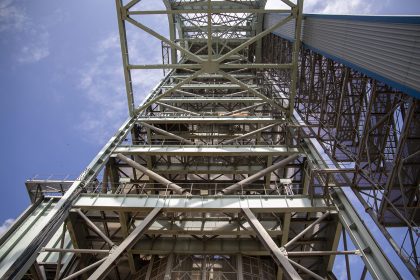Ahead of COP27, Aamena Desai, Senior Urban Designer at Arup, explains the need to future-proof cities across Africa and create more sustainable outcomes.
INTRODUCTION
Across the globe, rapidly expanding cities have led to a race for space.
This is particularly true for cities in Africa, which have an ever-increasing urban footprint. Data from the World Economic Forum has predicted that Africa’s 1.1 billion citizens will double in number by 2050, and more than 80 percent of that increase will happen in urban areas. As global cities ramp up efforts to achieve net zero, it is critical that this urban growth across Africa is tackled with sustainability in mind.
Given this backdrop, an important focus of this year’s COP27 summit in Sharm El Sheikh must be around sustainable urbanisation, which delivers infrastructure that puts people and the environment first. But how can we future-proof African cities for this next stage of development?
DATA AND INSIGHTS
As urban areas in Africa grow at pace, this expansion is often concentrated in lower-cost city outskirts, which paves the way for spawling city layouts. This not only increases the carbon footprint of the built environment, but in the absence of sustainable transport options, makes decarbonisation more challenging.
One way to better assess and manage infrastructure needs in an appropriate and sustainable way is through the use of data and insights. With the number of buildings in Africa expected to double in response to its growing population, emissions from households will also rise substantially. In response to this, data can help to optimise the location of future residential areas, helping to minimise impact on the planet.
Analysis such as whole lifecycle carbon assessments – which measure the carbon impact of projects across all stages of its life, including materials, construction, and the operations of the building – must become a key part of the planning process. Reliable analysis of this kind can influence city decision makers and developers to consider the choices they make in relation to their carbon impacts.
Using Johannesburg as a study area, Arup, in partnership with the Green Building Council South Africa and Divercity Urban Property Fund, compared building types in the urban core with the city’s suburban neighbours to determine the carbon impact of different locations.
The findings suggested that buildings in peripheral locations had a higher carbon footprint, providing evidence that more compact cities are not only less carbon intensive, but also offer better socio-economic outcomes for their people – whether this be through greater proximity to jobs, transport, water and sanitation services, or increased food security.
Given this, we need to see cities direct urban development in a much more conscious and proactive way, building up – not out – to ensure that both funders and citizens can realise the benefits.
NATURE BASED SOLUTIONS
When we think of cities, the phrase ‘concrete jungle’ comes to mind. But if we want to encourage sustainable urbanisation and fight climate change, we must start to think about the components of a city differently. Looking to a city’s own natural infrastructure – like seas, forests, parks and lakes – can play a crucial role in absorbing climate shocks such as flooding and extreme heat. These solutions should be seen as fundamental to urban planning.
In Dar es Salaam, our urban greening project will help inform the sustainable development of the city, supporting the government to create more resilient urban plans that leverage natural systems to minimise flooding, river erosion, and carbon emissions in the city. While every city is different, there is always potential to better utilise natural infrastructure.
URBAN RESILIENCE
We need to look no further than the UN’s Sustainable Development Goals to find city resilience as a key focus area. This too must be a central consideration when it comes to city planning. New construction techniques, alternative materials and innovative technologies make it possible to retrofit old, and design new, buildings and structures which can withstand current and future impacts of climate change.
Urban resilience approaches are key to ensuring that cities are more prepared for the effects of a changing climate which in Africa includes increased frequency and scale of natural disasters. What’s more, resilience planning that is inclusive of communities can be a tool to support other developmental goals such as job creation and economic development.
But what does resilient infrastructure look like? It could work to maximise access to daylight and avoid excessive heat in the summer, or use natural ventilation to regulate temperature and minimise the need for air conditioning, like we see in the V&A Granger Bay area in Cape Town. Resilient infrastructure can also prompt more climate positive human behaviours by encouraging citizens to embrace habits that fight climate change – such as active travel, public transport use, and recycling.
For too long, city planning has not responded fast enough to the needs of populations and the environment. As more people turn to cities across Africa, this year’s COP27 summit provides a window of opportunity to focus on driving positive change when it comes to sustainable urbanisation.
Key to this will be addressing issues of financing, skills, governance, and supply chain innovation. And while it is good to see Africa taking the lead in addressing its own sustainability – with many cities signing up to global initiatives such as C40, and nations developing their own Nationally Determined Contribution plans – global support and participation is critical to ensure that implementation is effective and timely.
By coming together to better utilise data, embrace natural infrastructure, and factor resilience measures into urban planning, we have a chance to future proof cities across Africa, and in doing so, create more sustainable outcomes for urban citizens across the continent.































